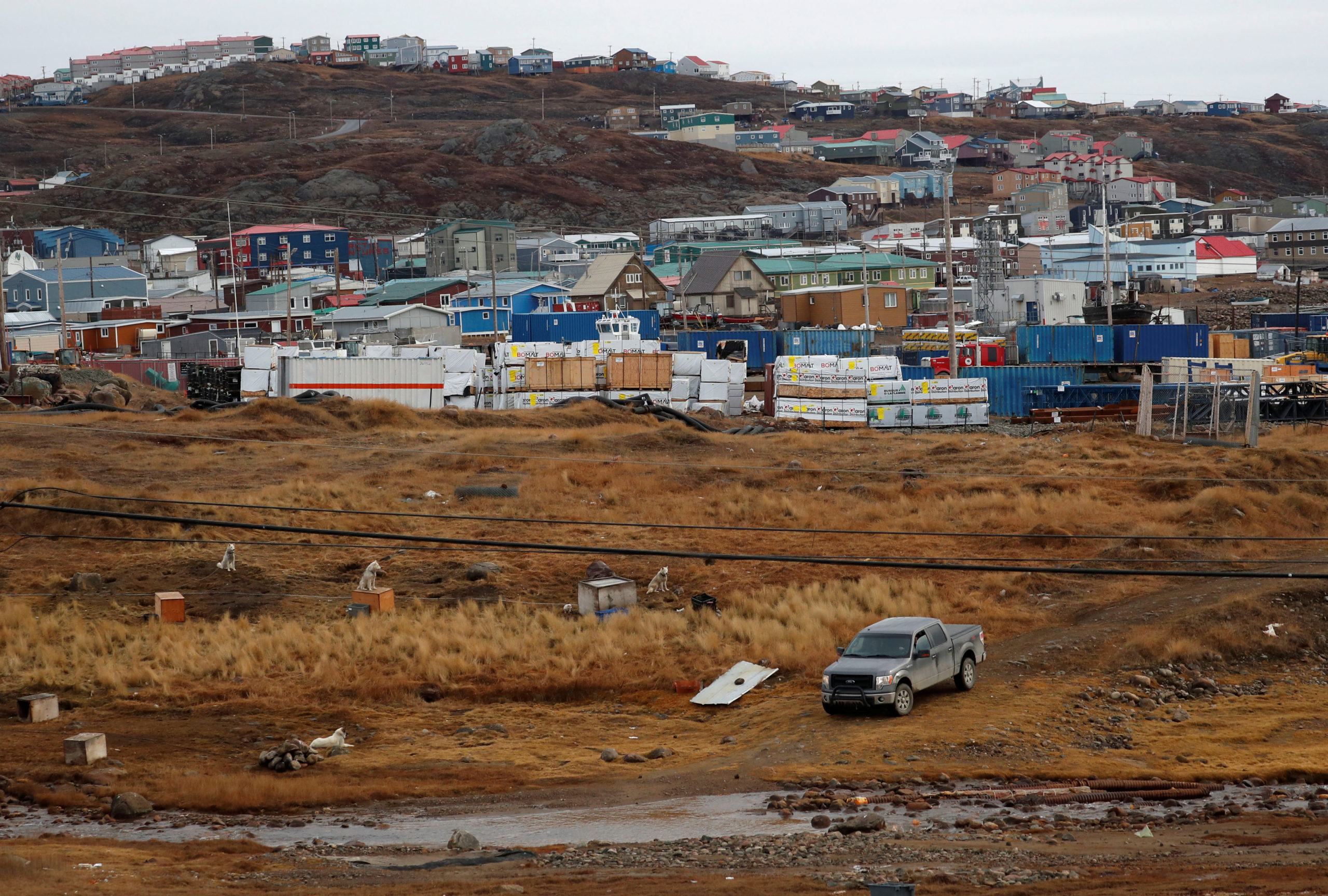Nunavut COVID-19 lockdown begins as cases continue to rise
“We have the opportunity to turn this around in two weeks. If we don't stick to these measures, it can be longer — and possibly much longer.”

Nunavut enacted new restrictions on Wednesday to prevent the further spread of COVID-19, even as cases in the territory continued to rise.
There are 10 new confirmed cases, bringing the total active cases in Nunavut to 70, officials said in a Wednesday morning press conference outlining the new restrictions. Eight of the cases were in Arviat, which now has 54 cases, while two more were detected in Rankin Inlet, which now has six cases.
In addition, Whale Cove has confirmed eight positive cases and Sanikiluaq has two positive cases.
All of these cases are in the Kivalliq region; there have been no confirmed cases on Baffin Island.
Arviat has confirmed community transmission, which means the virus has been spread among residents.
“Our rise in cases over the past few days is significant and seems scary,” said Joe Savikataaq, the premier of Nunavut. “But we did know they would rise once the virus was in the territory.”
However, he urged residents to abide by the restrictions in order to halt the spread of the virus as quickly as possible.
“Two weeks,” Savikataaq said. “We have the opportunity to turn this around in two weeks. If we don’t stick to these measures, it can be longer — and possibly much longer.”
Dr. Michael Patterson, Nunavut’s chief public health officer, said they won’t know until the end of the two-week period whether transmission has been contained, which means restrictions may be extended further if necessary.
The new restrictions make masks mandatory in communities with confirmed cases, and recommended in all others. (None of the officials who spoke wore masks, however.)
Socialization or gatherings of any sort are not recommended throughout the territory, and gatherings will be limited to five people.
Only essential work will continue, with all others working and learning from home. Only necessary travel will be permitted, although what “necessary” means was not clarified in the conference.
Officials also urged cooperation with contact tracers.
“This is it, folks. It’s time to take a stand and fight against COVID-19,” Savikataaq said. “We need you all to make sacrifices now to protect our communities.”
Patterson said Nunavut’s relatively rapid rise in confirmed cases is a result both of ongoing transmission, in some cases, as well as an increase in testing.
It’s too soon to say if community transmission in Arviat has been halted, he said.
However, the territory has invested in testing in order to turn around results much faster, Patterson said.
In the spring, when communities had to fly all samples south for testing, it took an average of seven days to learn results — but sometimes it was as long as 17 days.
Now, Iqaluit and Rankin Inlet both have testing machines that can process four to eight tests an hour.
Rankin Inlet has six beds available for patients in its health facilities, while Iqaluit has more than 20.
But because there have been no confirmed cases on Baffin, patients who need extended medical care would likely be medically evacuated south to a larger facility. Patterson said they are watching the capacity levels of these southern facilities to make sure they are not overwhelmed by local cases.
Lorne Kusugak, Nunavut’s minister of health, said the federal government has pledged additional resources as needed — including the possibility of bringing in military medics.
“Please be kind to each other,” Patterson said. “The spread of this virus was not done intentionally.”
“I know this will be hard, so I’m asking that you reach out, if you’re struggling, to friends, to family, to loved ones and beyond if you need to,” Savikataaq said. He recommended contacting services that have been set up for those experiencing effects on their mental health.